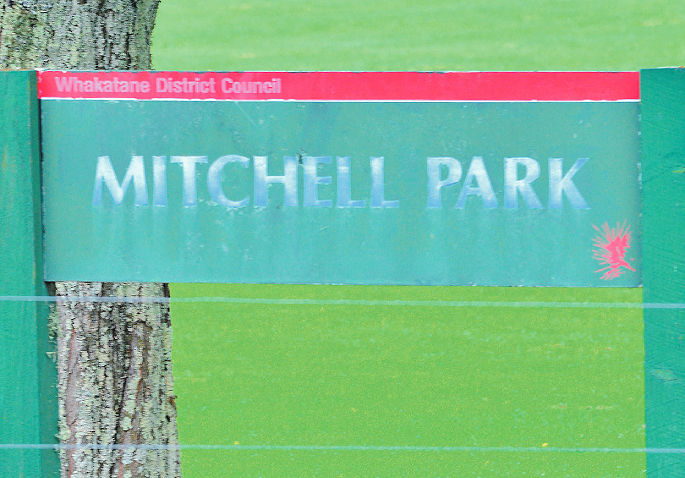Whakatāne district councillors have been at odds over spending on improvements to Ōhope Wharf and Mitchell Park – projects worth half a million dollars each.
After a lengthy debate of the Living Together Committee this week, it was decided the Ōhope Wharf project would go ahead, while the Mitchell Park plan would be resheduled to a later date.
Both projects were already budgeted for in the current annual plan so would not result in any increase to rates in the upcoming long-term plan.
The wharf project would see improvements to address liquor licensing requirements such as the provision of toilets and building use consents, internal heating and wind protection, so it could be used during winter months, updating roadside signage and increasing pedestrian connectivity. It was projected to increase the fees the council could receive from the venue to as much as $40,000 by 2030.
The Mitchell Park improvements included better drainage, toilets, signage, lighting, seating, tables and shade. While it would benefit the Sunday Market and the RSA, if it went ahead with plans to extend its restaurant, there was little in the way of commercial outcomes for the council.
Some councillors felt because circumstances had changed, such as the council now having fund three waters and upcoming large increases in rates, the projects should be postponed.
Mayor Victor Luca, during discussion of the wharf plan, said while he accepted it would not have a direct impact on rating it was still adding to the council’s borrowings.
“So that’s $500,000 off the table in terms of the total quantum the council will borrow.”
However, while he was initially opposed to it, he said it was a proposition that could make a little bit of money – albeit not very much.
“It could wash its own face,” he said.
He voted to approve the budget.
Deputy mayor Lesley Immink, Julie Jukes, Nandor Tanczos, Toni Boynton, John Pullar and committee chair also supported the project.
Mr Tanczos said that for two years it was projected to cost a few thousand more than in earned but from year three it was going to earn significantly more on an ongoing basis.
“So it’s actually about generating a positive cash flow for the council.”
 Mitchell Park is the venue for the Whakatāne's weekly Sunday Market, but is prone to flooding in winter. File photo.
Mitchell Park is the venue for the Whakatāne's weekly Sunday Market, but is prone to flooding in winter. File photo.
Kāpū Te Rangi Māori ward councillor Toni Boynton was concerned about the impact not going ahead with the project would have for Ngāti Hokopū considering there had been considerable consultation with the hapū who were mana whenua of that area.
Strategy and transformation general manager Steven Perdia said he felt there would be disappointment among all of the stakeholders on the planning process.
Council chief executive Stephanie O’Sullivan said council also needed to be concerned about investor confidence for nearby private businesses relying on council plans for public infrastructure.
Rural councillors felt that enough money had been spent on Whakatāne and Ōhope.
Councillors Gavin Dennis, Andrew Iles, Tu O’Brien, and Ngapera Rangiaho voted against the wharf project.
“What about spreading the love across all the district,” Rangitaiki general ward councillor Gavin Dennis said. He also commented that there were some of the most expensive toilets in the district less than a minute’s walk away from the wharf.
He was backed by Rangitaiki Māori ward councillor Tu O’Brien.
“I’ve always said, we’ve invested enough money in Ōhope. Enough is enough ... If there needs investment in that space then those people who have stalls in that space should be contributing to it,” Mr O’Brien said.
“I don’t think at this time that we should be in the business of providing drinking establishments or wedding venues as described in this plan,” Mr Dennis said.
Councillor Andrew Iles said he would like to see the matters put on hold to be considered alongside the long-term plan deliberations.
The Mitchell Park plan was a different matter.
This was supported only by councillors Ms Jukes, Mrs Immink and Mrs Boynton.
Ms Jukes said she felt it was important to “activate the space”.
“It will add good economic value for the town by having more activities in that space. It’s already budgeted for. We’ve already approved this money. Like the wharf, there’s revenue opportunities for us,” Ms Jukes said.
Mrs Immink agreed, saying also that there were people who attended the market at Mitchell Park were not necessarily the people who attended other events.
“It’s a certain community and vibe, but also there are cost issues with people getting their fresh fruit and vegetables. She was in favour of the toilets being done as she had seen distressed parents with children not being able to get the to the toilets on Boon Street.”
Mr Pullar abstained from voting as he felt he had a conflict of interest due to being on the executive committee of the RSA.
“The RSA would get some benefit out of the improvements,” he said.
Staff were asked to provide a report to the committee detailing a phased work programme and corresponding budget.
LDR is local body journalism co-funded by RNZ and NZ On Air.




0 comments
Leave a Comment
You must be logged in to make a comment.